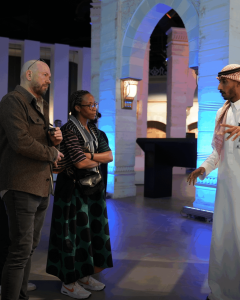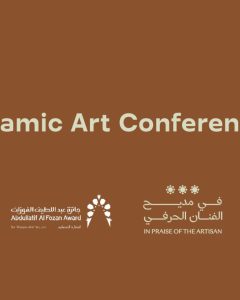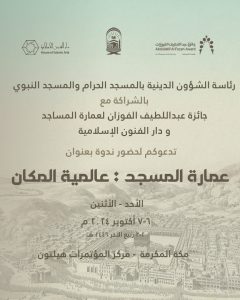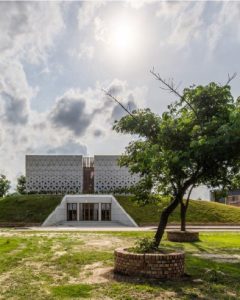It is acknowledged that the role of mosques; as the core of architectural adroitness; throughout the recent Arab and Islamic civilization had been ceased. This cessation had occurred two centuries ago; particularly in the early half of the 19th century; and took to escalation reaching the time being mosque architectural desolation. Lamentably, mosque architecture has been void of any actual influence on the visual or constructional architectural productions. Thus, it has been crucial, to conduct a thorough historical study in consideration of mosque architecture in the 19th and 20th centuries. This point has been denoted by Dr. Khaled Azzab in the symposium held in Bibliotheca Alexandrina in 25th July 2018. He has assured the sheer absence of any realistic or methodological documentation regarding those mosques built during the late two centuries, despite that most of the world’s mosques has been founded amidst the very same era. Henceforward, we do confront a lack of information crisis; as well as; lag of civilizational and architectural influence in the realm of mosque architecture. Besides, we desperately suffer from a backward competence of any professional and artistry values of mosque architecture; resultantly the economic one on equal grounds.
Throughout the Islamic reign, mosque architecture had been of domineering professional and artistry influence. Therefore, a wide interval of industries had been based on this architecture, resulting in an economic rise accompanied by visual artistry developmental motivation for countless centuries. In other words, an artistry community had been born, nourished and worked on generating creative and innovative ideas, to develop the field of mosque architecture along the Islamic reign. This development was not restricted on mosque architecture, but extended to develop the entire architectural discipline. In addition, the developmental trend on the professional and artistry standards, had lead to successive waves of innovation and creativity in the beaux-arts and construction systems. Economy-wise, a vast market had been initiated, to serve that end for several years. Furthermore, the named influence had shown a horizontal growth that mosque architecture had been an architectural school on its own, enclosing other architectural building cases. On these grounds, mosque architecture is labeled as the architectural core of Islamic civilization, for it had been the economic dynamo and mother of innovation in this field starting from mosque architecture, to sovereign other architectural cases.

The question is; why had this economic influence and innovative glory met their doom? How it all ended up in that architectural desolation of mosques? These are but critical interrogations that necessitate reconsidering the birth and structure of the recent architecture. Moreover, the role of the professional associational and technical transformations in the seclusion of the innovative and economic influence of mosque architecture must be debated. From my own perspective, I believe that this deterioration is due to a whole civilizational retreat, not only confined to that of mosque architecture. This controversy goes back to the civilizational and architectural production in general allied with our economic, artistic and technical influence shrinkage to our local compass, which had been echoed worldwide. No question, this deterioration had shown on the bed of innovation; mosques. However, this justification seeks conducting many other studies illustrating cases in point. It is worth mentioning, that there are various reasons behind this consequence. Yet, it is asserted, that there is a must research controversial issue.
Thence, the prime motif after inaugurating Alfozan Award for Mosque Architecture is to revive the dormant role of mosque architecture and generate creative visual and constructional innovative arts. On the same thread, it aims at creating a professional community, to realize developed mosque artistry and crafts. Confessedly, this mission is far from being simplistic, but underlies studying numerous aspects in conjunction with documentation and database creation. This goal could come to existence by passing three huge database projects; “Mosqpedia” a digital mosque encyclopedia, “Asfaar” a digital library storing all the worldwide published mosque information and “Manaber” a digital database designed to bring together those interested in mosque architecture from architects, artisans, technicians, academics, writers and institutions all over the world.
The award also focuses on creating a professional community by granting 10 awards for best designs of contemporary mosque architecture all over the world, where each mounts to $ 1 million every three years. In addition, the award longs for nurturing the intellectual and scientific aspects of mosque architecture, thanks to its collaboration with prestigious institutions in the practical research of training and education of mosque architecture. These three basic aspects are the corner bricks of the civilization revitalization project, which aims at bringing the civilizational cultural communication of mosque architecture back to the general architectural context around the world.





